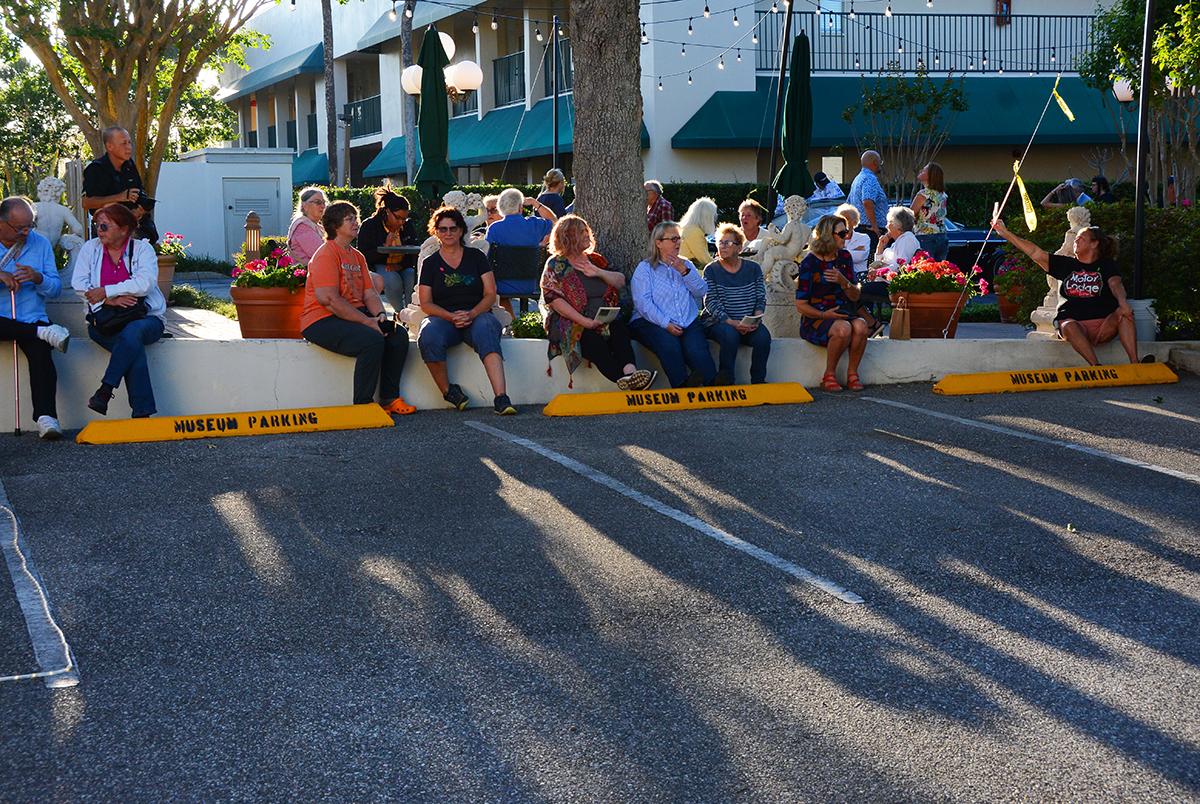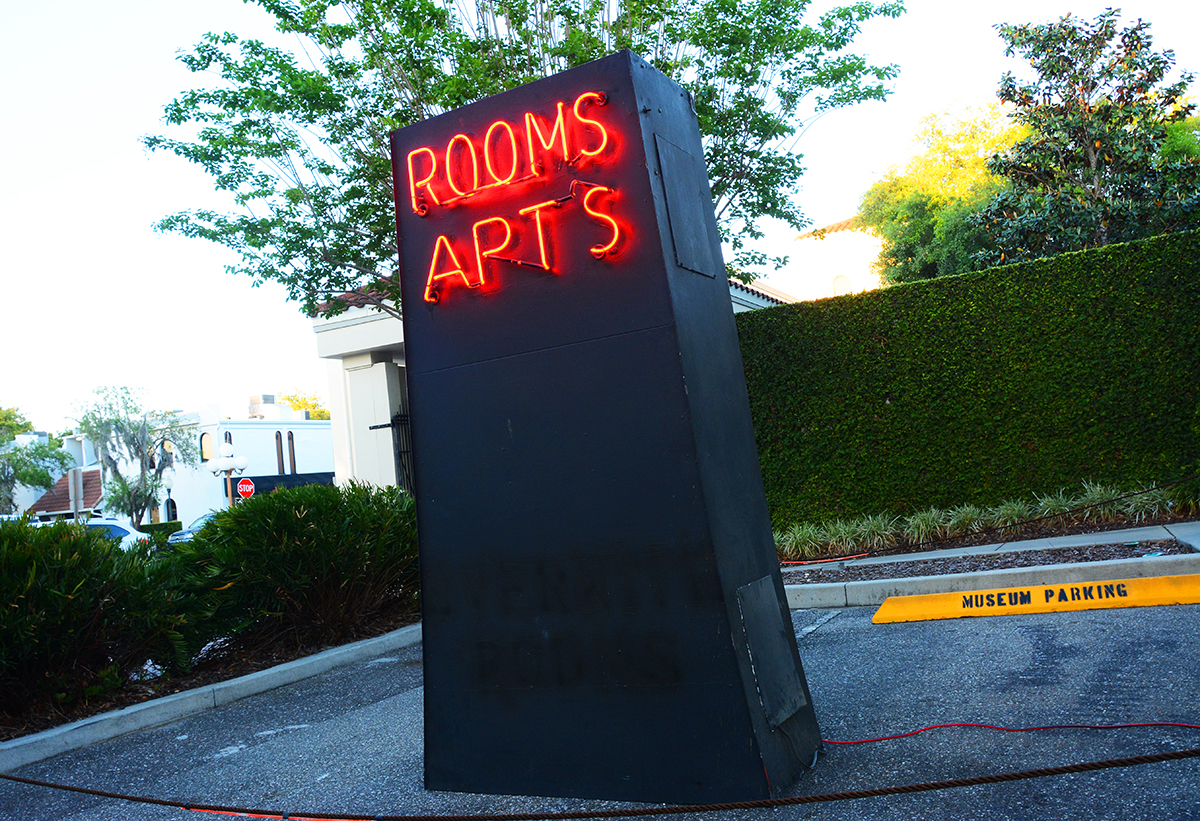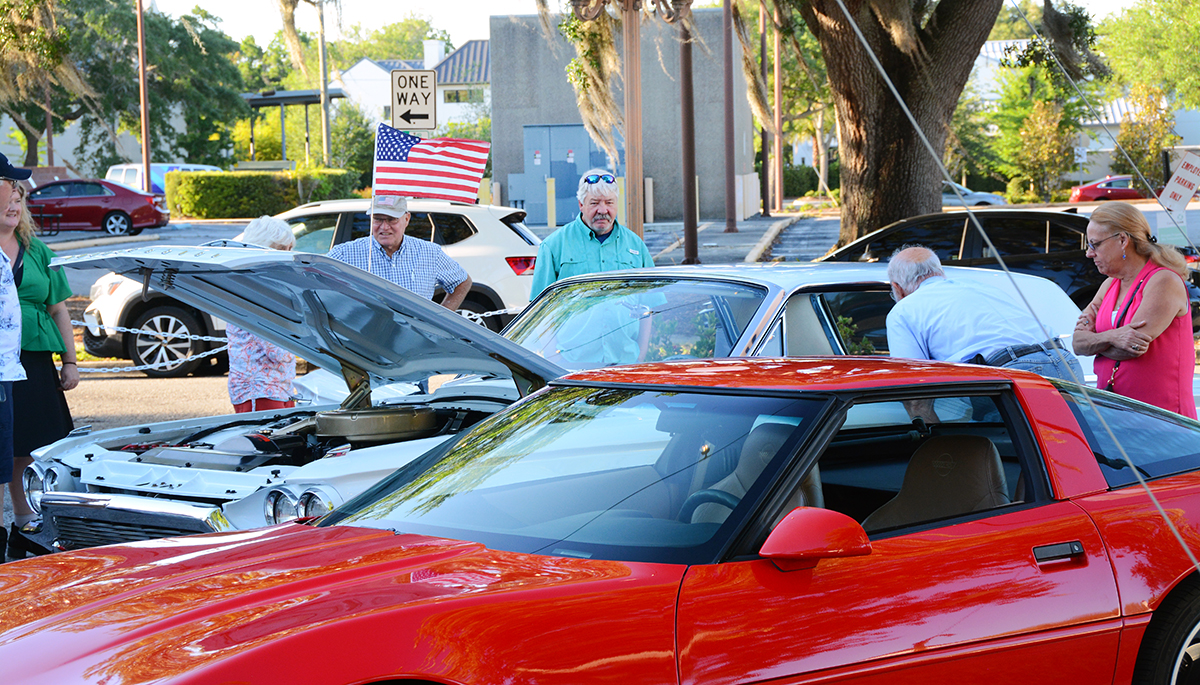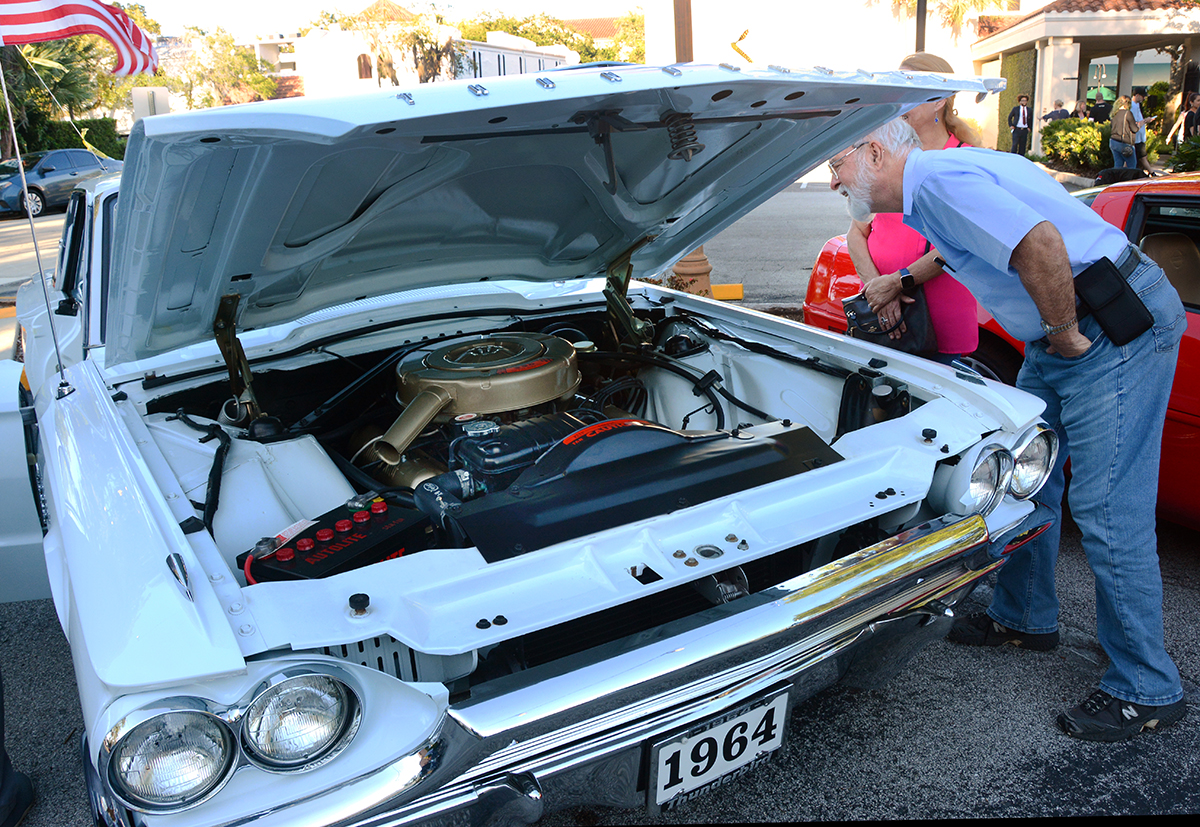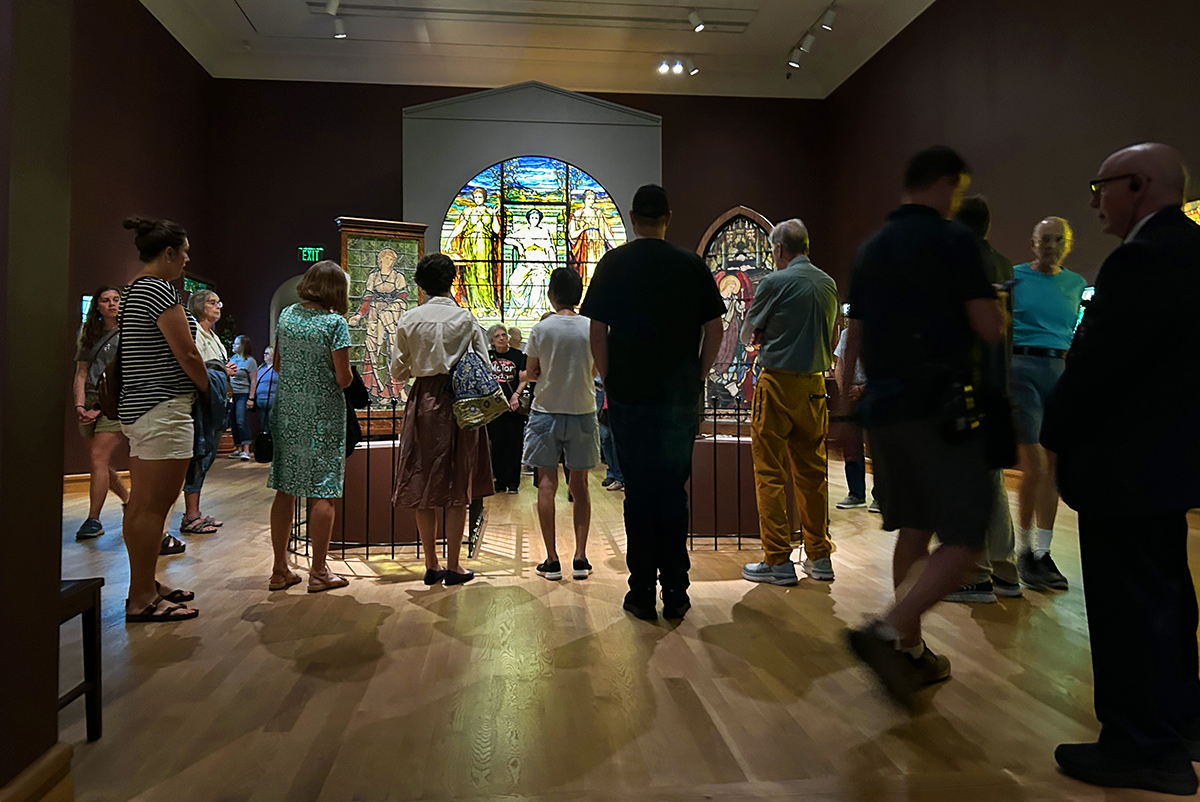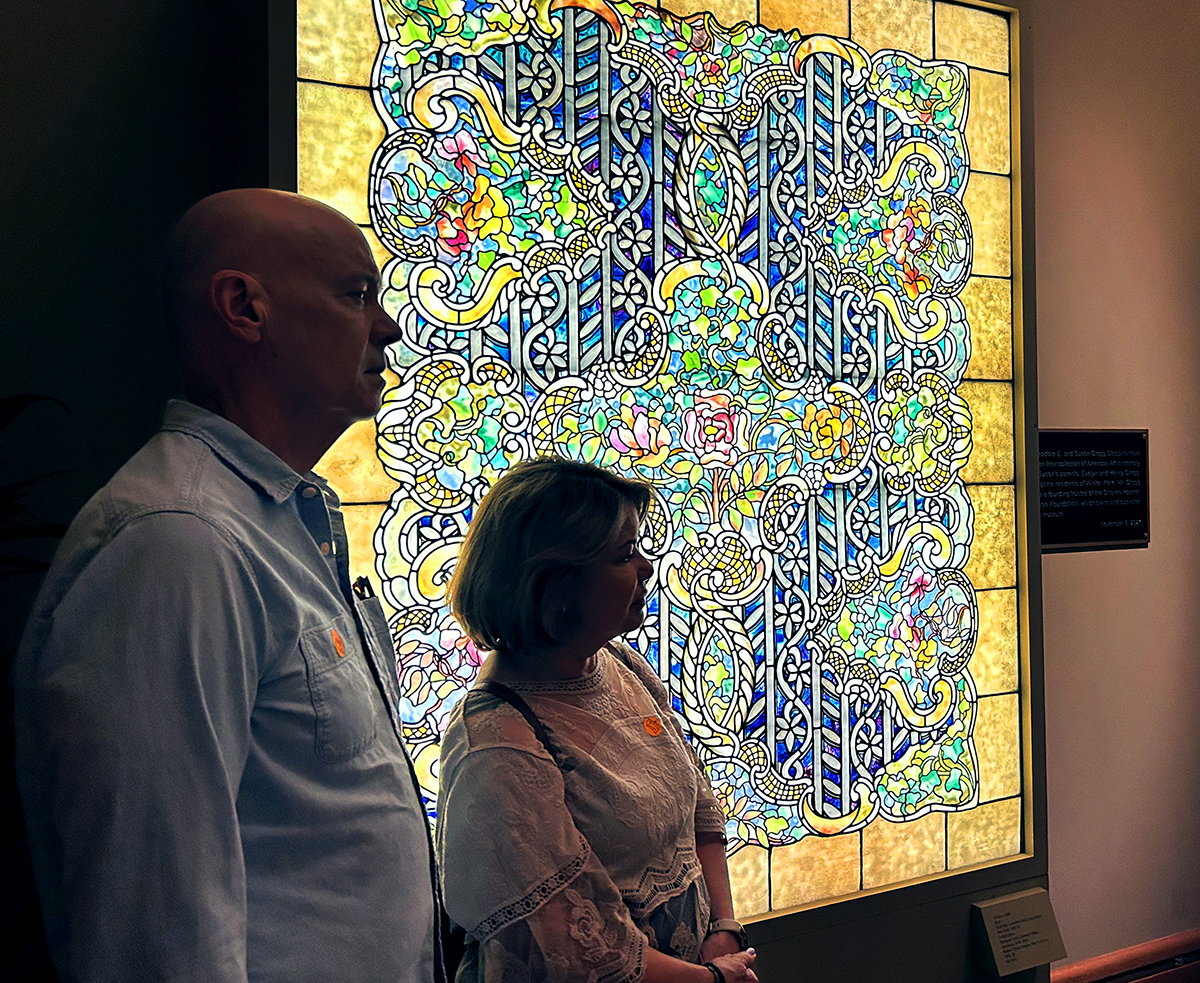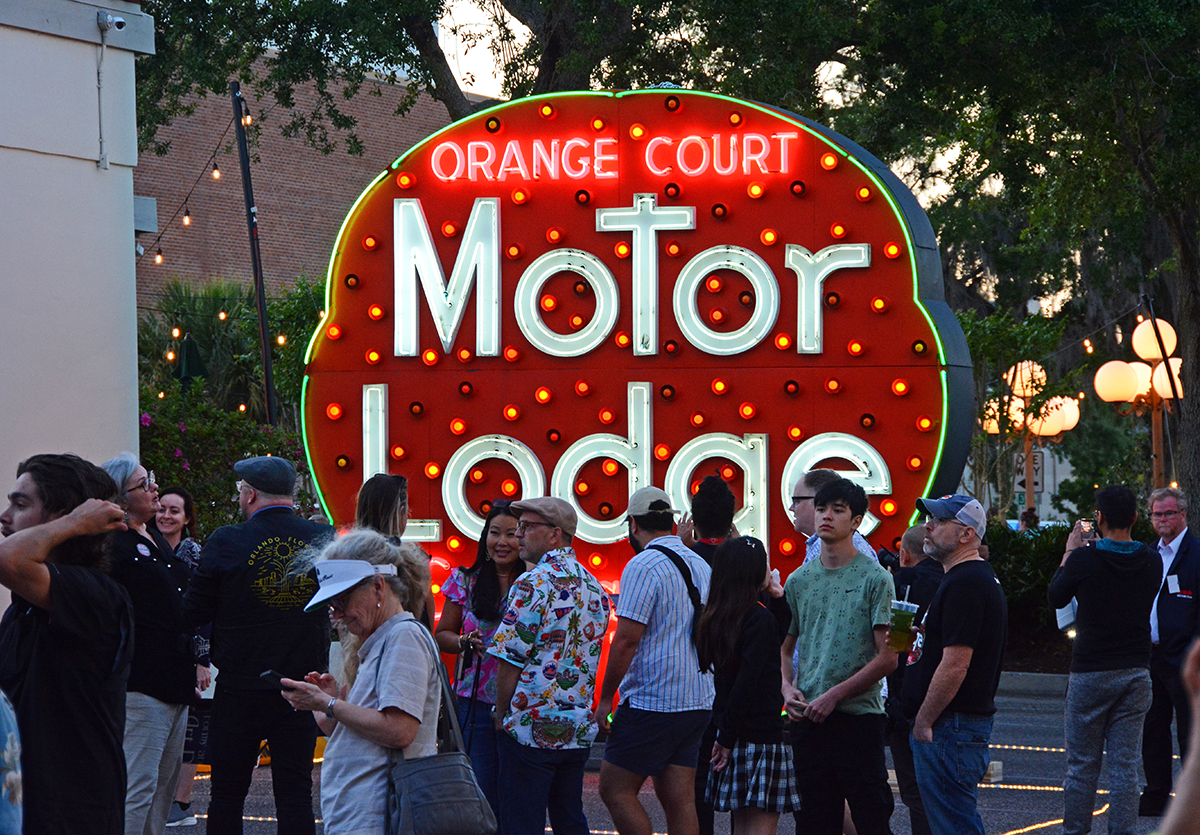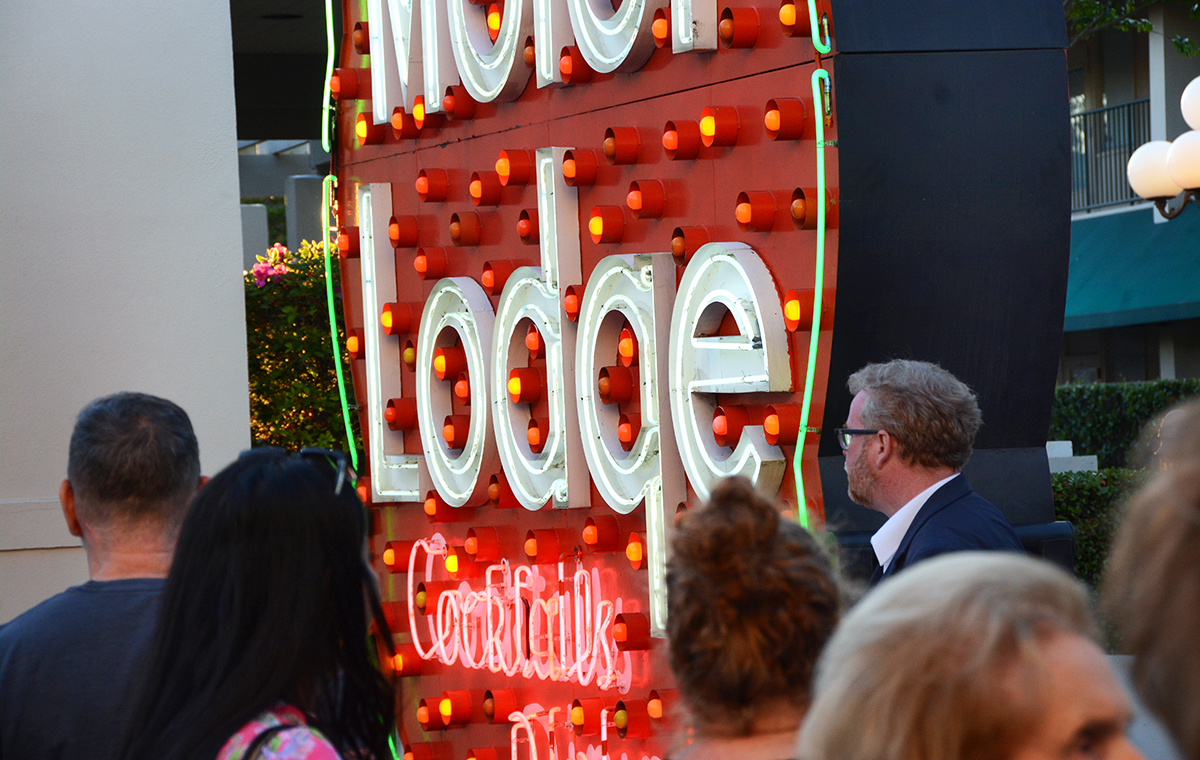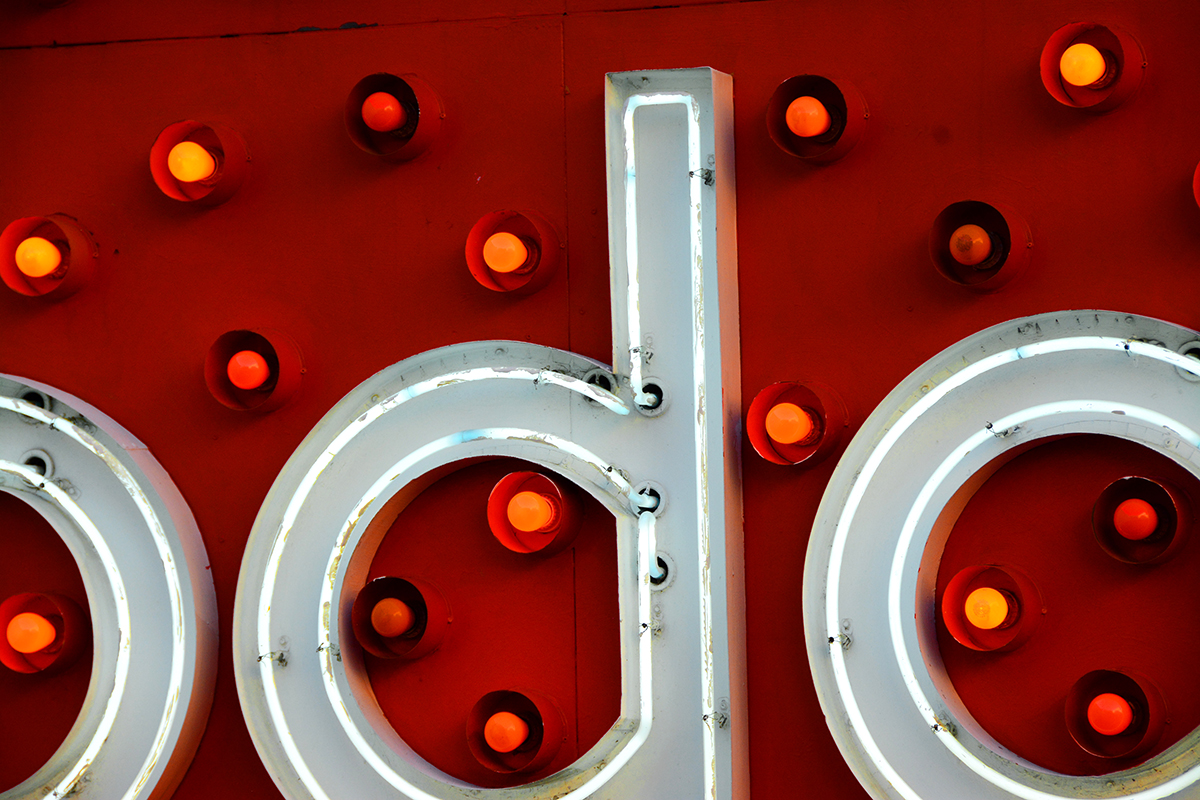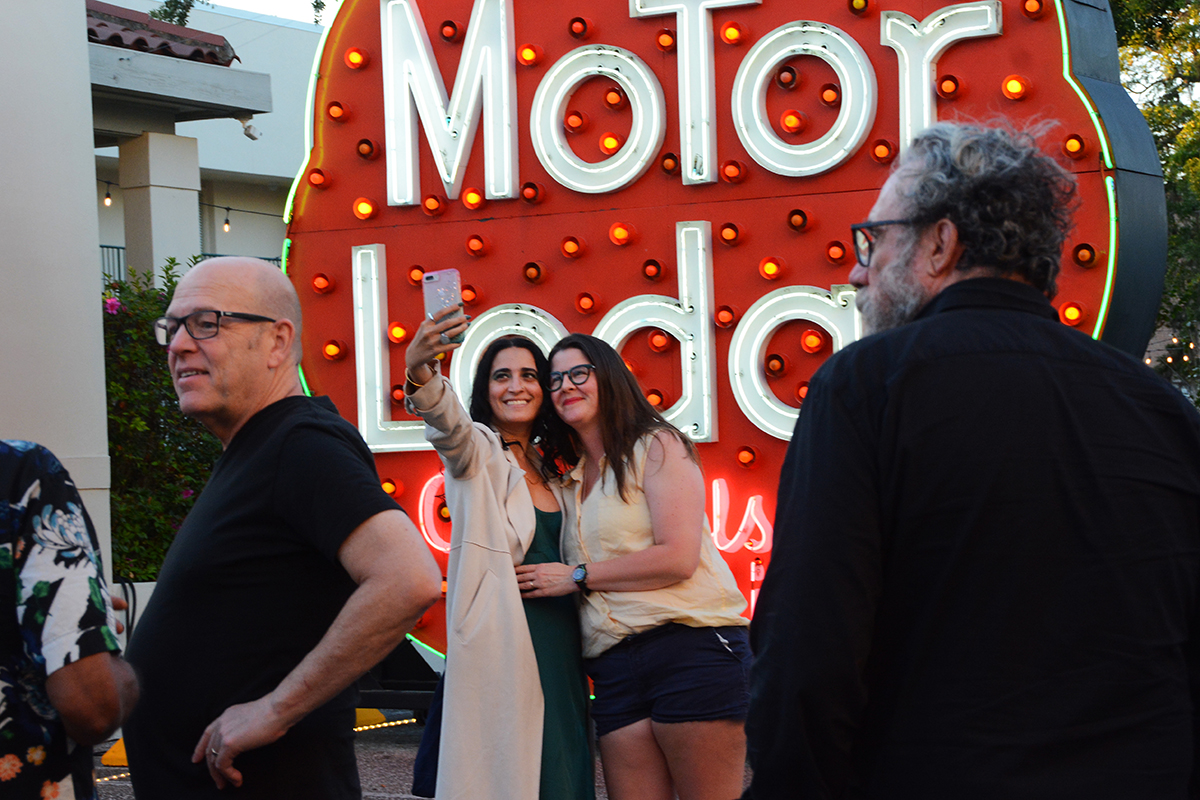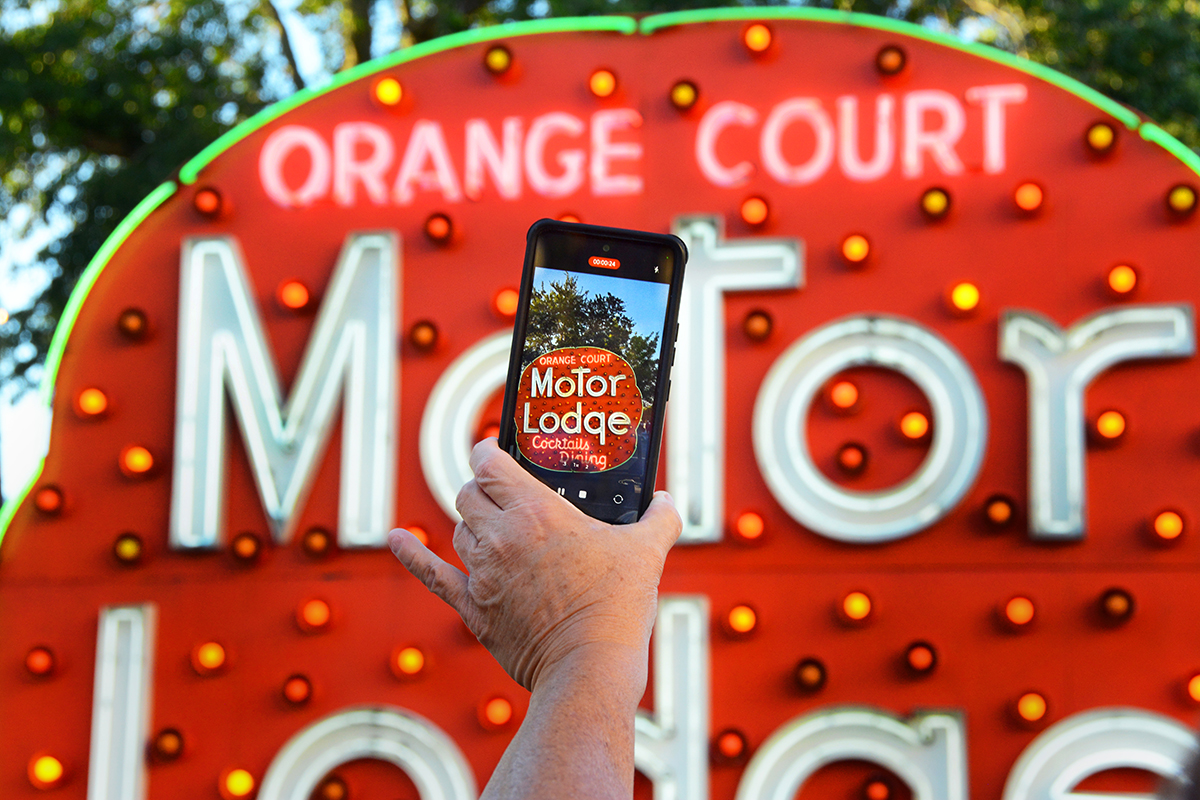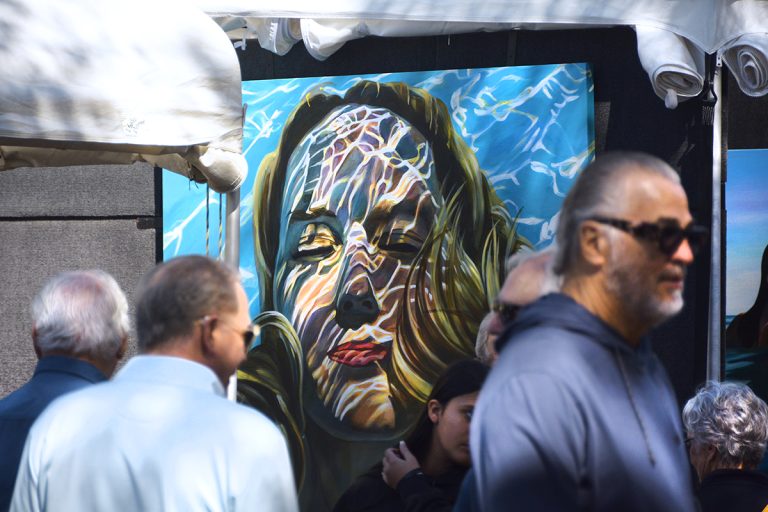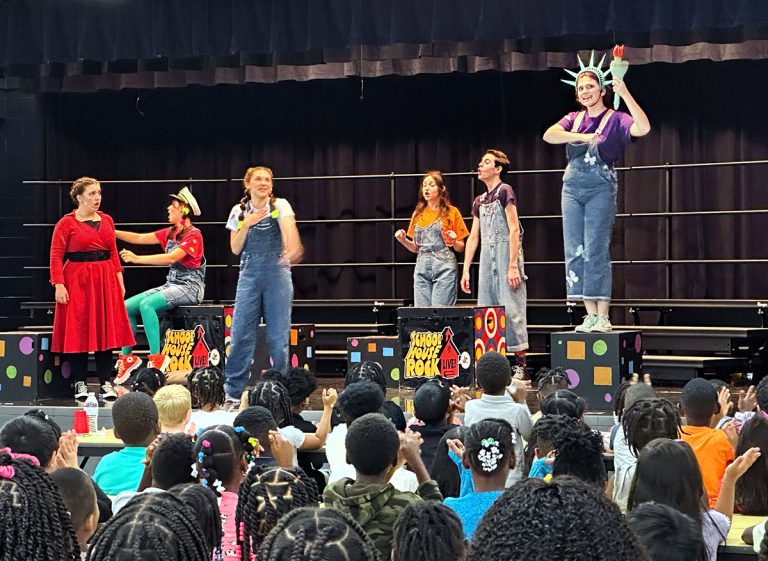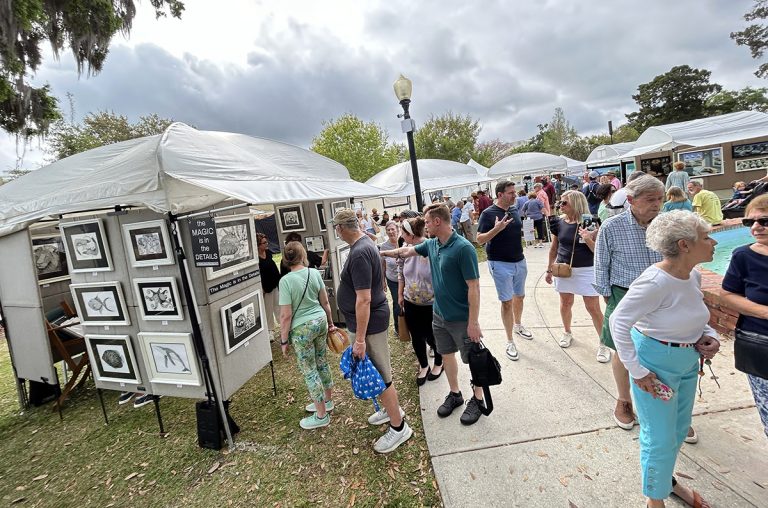Curious crowds made their way to the Charles Hosmer Morse Museum of American Art on the evening of April 12 for a special outdoor exhibit with a nostalgic flair. The Neon Night event featured a one-time illuminated display of the Orange Court Motor Lodge sign from the museum’s storied collection of local business signage.
The piece was acquired by Morse Museum Founding Director Hugh F. McKean shortly after the hotel closed in 1990. The exhibit was the culmination of meticulous restoration and careful preservation, but bringing the 14-foot-tall, 1,000-pound sign to the museum was its own challenge as delicate circuitry and bulbs make any move a precarious mission.
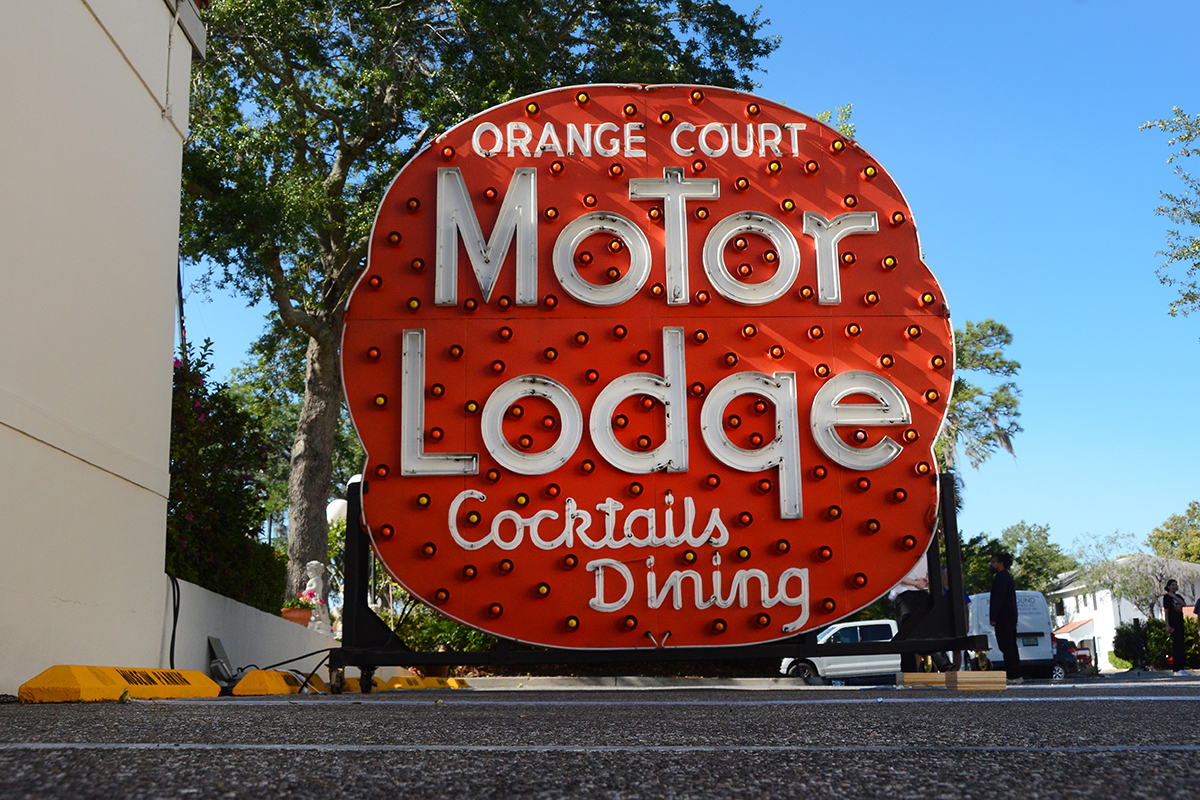
“The logistics of transporting these (signs) is one of the most difficult parts of owning them,” said Morse Museum Director and Chief Curator Jennifer Perry Thalheimer. During a pre-lighting statement to event attendees, she recalled the consideration of a far-too-pricey helicopter transport to avoid navigating tree canopies, narrow streets, and other obstacles.
The sign had previously been cut into two pieces for proper storage and transportation from its original location, and was reassembled onsite. “We had to split the circuits in two. Once we got the sign bolted together, we spliced everything back together again.” said Museum Director of Facilities and Security Tom Mobley of the assembly process, which took approximately 90-minutes to complete. When asked if Neon Night could be the first of more showings from the sign collection, Mobley seemed uncertain but hopeful. “This is our trial run at it, we’ll just see what happens.”
The outdoor exhibit was accompanied by special gallery tours that focused on the light and color of the museum’s Louis Comfort Tiffany collection – qualities that tie the art to the neon restorations. However, the Morse Museum’s sign collection goes beyond an appreciation of artistic stylings. According to Perry Thalheimer, it’s a way of preserving the past and working toward a day when the exhibit can be appreciated by the public.
“When our architectural history is not preserved, we lose more than just the physical elements in it,” she said. “We lose a tangible link to the memories.”
